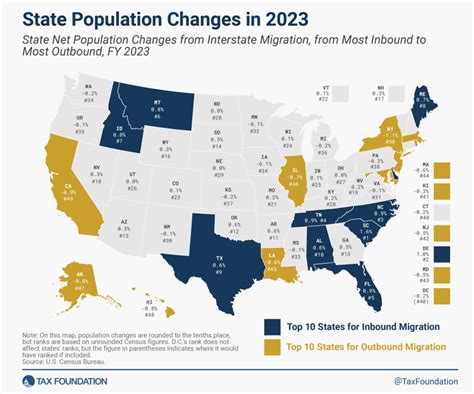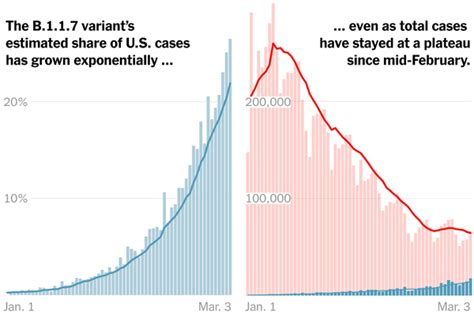
Denver is experiencing a significant outflow of residents, ranking among the top ten U.S. cities with the highest outbound moving activity, according to recent data from PODS Moving & Storage. This trend signals a potential shift in the city’s demographic landscape and raises questions about the factors driving residents to relocate.
Denver Sees Significant Exodus as PODS Data Places it Among Top Outbound Cities
Denver is grappling with a notable exodus of its population, securing a place among the top ten cities in the United States with the highest outbound moving activity, according to the latest data released by PODS Moving & Storage. This trend, highlighted in their analysis of moving patterns, suggests a significant demographic shift within the city and prompts deeper examination into the factors compelling residents to seek new locales.
The PODS data, which tracks moving trends across the country, reveals that Denver is experiencing a higher volume of residents leaving than those moving in. While the report does not specify exact figures for Denver’s outbound percentage, its inclusion in the top ten signifies a substantial imbalance in the city’s moving dynamic. This development raises critical questions about the sustainability of Denver’s growth and the evolving preferences of its residents.
“Cities appearing on the top outbound list are experiencing more residents leaving than moving in,” PODS noted in its report. This outflow can be attributed to a multitude of factors, ranging from economic considerations and housing affordability to lifestyle preferences and job market opportunities in other regions.
The implications of this exodus extend beyond mere population decline. It could potentially impact the city’s economy, housing market, and overall social fabric. A decrease in population could lead to reduced tax revenue, affecting the city’s ability to fund public services and infrastructure projects. Furthermore, an increase in housing vacancies could put downward pressure on property values, creating uncertainty for homeowners and investors alike.
Several underlying factors contribute to Denver’s outbound migration. The rising cost of living, particularly the escalating housing prices, is a primary driver. Denver has witnessed a significant surge in housing costs over the past decade, making it increasingly difficult for individuals and families to afford homeownership. This affordability crisis disproportionately affects young professionals, families with children, and retirees on fixed incomes, compelling them to seek more affordable options in other states or metropolitan areas.
According to recent real estate analyses, the median home price in Denver remains considerably higher than the national average, putting homeownership out of reach for many prospective buyers. Rental rates have also seen a substantial increase, further exacerbating the affordability challenges faced by Denver residents.
“The cost of living in Denver has become unsustainable for many,” says local real estate agent Sarah Miller. “People are looking for more affordable options where they can maintain a comfortable lifestyle without being burdened by exorbitant housing costs.”
Another contributing factor to Denver’s outbound migration is the increasing competition in the job market. While Denver boasts a thriving economy with numerous employment opportunities, the influx of skilled workers from other states has intensified competition for available positions. This increased competition can make it challenging for recent graduates and those seeking career advancement to secure desirable jobs with competitive salaries.
Moreover, some residents are opting to leave Denver in search of a different lifestyle. The city’s rapid growth and urbanization have led to increased traffic congestion, longer commute times, and a perceived decline in the quality of life. Some individuals are seeking a more relaxed and less congested environment, often opting for smaller towns or rural areas with greater access to outdoor recreational activities.
The COVID-19 pandemic has also played a role in accelerating Denver’s outbound migration. The shift towards remote work has allowed many individuals to relocate to more affordable or desirable locations without compromising their employment. This newfound flexibility has prompted some Denver residents to re-evaluate their priorities and seek out new living arrangements that better suit their evolving needs and preferences.
“Remote work has given people the freedom to live wherever they want,” explains career coach John Davis. “Many Denver residents are taking advantage of this opportunity to move to places with lower costs of living and a better quality of life.”
The consequences of Denver’s outbound migration are far-reaching and require careful consideration by city officials and policymakers. Addressing the affordability crisis, promoting economic diversification, and investing in infrastructure improvements are crucial steps towards retaining residents and ensuring the city’s long-term sustainability.
The city government has implemented several initiatives aimed at addressing the housing affordability crisis, including the development of affordable housing units, the implementation of inclusionary zoning policies, and the provision of financial assistance to first-time homebuyers. However, these efforts have yet to fully address the magnitude of the problem, and further action is needed to create a more equitable and accessible housing market.
In addition to addressing housing affordability, Denver needs to focus on diversifying its economy and creating new job opportunities in emerging industries. Investing in education and workforce development programs can help equip residents with the skills and knowledge needed to succeed in a rapidly changing job market. Furthermore, promoting entrepreneurship and innovation can foster economic growth and create new opportunities for local businesses.
Infrastructure improvements are also essential for improving the quality of life in Denver and reducing traffic congestion. Investing in public transportation, expanding bike lanes, and improving road infrastructure can help alleviate traffic bottlenecks and make it easier for residents to get around the city.
Denver’s outbound migration is a complex issue with no easy solutions. However, by addressing the underlying factors driving residents to leave and implementing comprehensive strategies to promote affordability, economic growth, and quality of life, the city can mitigate the negative consequences of this trend and ensure a more sustainable future.
The city must also consider the social implications of this shift. The departure of long-time residents can erode the city’s unique character and sense of community. It is important to preserve Denver’s cultural heritage and foster a welcoming environment for newcomers to maintain the city’s vibrant and diverse identity.
Ultimately, Denver’s success in addressing its outbound migration will depend on its ability to adapt to changing circumstances and create a city that is both affordable and attractive to a wide range of residents. This requires a collaborative effort involving city officials, policymakers, business leaders, and community members working together to build a more sustainable and equitable future for Denver.
The challenge now lies in understanding the long-term impact of this trend and implementing policies that can help retain residents and attract new ones. Addressing the concerns of those who are leaving and creating a more attractive environment for potential newcomers is crucial for ensuring Denver’s continued growth and prosperity.
The PODS data serves as a valuable indicator of the shifting dynamics within Denver and provides a starting point for further analysis and discussion. By understanding the reasons behind this outbound migration, the city can develop targeted strategies to address the challenges and capitalize on the opportunities that lie ahead.
The future of Denver depends on its ability to adapt to these changing demographics and create a city that is both economically vibrant and socially inclusive. By working together, residents, businesses, and policymakers can shape a future where Denver remains a desirable place to live, work, and raise a family.
The city is at a crossroads, and the decisions made in the coming years will determine its trajectory for decades to come. Addressing the outbound migration is not just a matter of population statistics; it is a matter of preserving the city’s identity, ensuring its economic vitality, and creating a sustainable future for all its residents.
In-Depth Analysis of Contributing Factors
The analysis of Denver’s outbound migration reveals a complex interplay of economic, social, and lifestyle factors. A closer look at these factors provides a more nuanced understanding of the challenges facing the city and the potential solutions that can be implemented.
Housing Affordability Crisis:
The escalating housing costs in Denver have been a major concern for residents and policymakers alike. The median home price in Denver has risen dramatically over the past decade, outpacing wage growth and making homeownership unattainable for many individuals and families. This affordability crisis has particularly affected young professionals, families with children, and retirees on fixed incomes.
The demand for housing in Denver has consistently outstripped the supply, driving up prices and creating a highly competitive market. This imbalance is due to a combination of factors, including population growth, limited land availability, and restrictive zoning regulations.
The city government has implemented several initiatives to address the housing affordability crisis, including the development of affordable housing units, the implementation of inclusionary zoning policies, and the provision of financial assistance to first-time homebuyers. However, these efforts have not been sufficient to fully address the magnitude of the problem.
More aggressive and innovative solutions are needed to create a more equitable and accessible housing market in Denver. This may involve relaxing zoning regulations to allow for higher-density development, providing subsidies to developers to build affordable housing, and implementing rent control measures to protect tenants from excessive rent increases.
Job Market Competition:
Denver’s thriving economy has attracted skilled workers from all over the country, leading to increased competition in the job market. While this influx of talent has contributed to the city’s economic growth, it has also made it more challenging for recent graduates and those seeking career advancement to secure desirable jobs with competitive salaries.
The competition for jobs in Denver is particularly intense in high-demand industries such as technology, healthcare, and finance. These industries have experienced rapid growth in recent years, attracting a large number of qualified applicants.
To address this issue, Denver needs to focus on diversifying its economy and creating new job opportunities in emerging industries. Investing in education and workforce development programs can help equip residents with the skills and knowledge needed to succeed in a rapidly changing job market. Furthermore, promoting entrepreneurship and innovation can foster economic growth and create new opportunities for local businesses.
Lifestyle Preferences:
Some residents are opting to leave Denver in search of a different lifestyle. The city’s rapid growth and urbanization have led to increased traffic congestion, longer commute times, and a perceived decline in the quality of life. Some individuals are seeking a more relaxed and less congested environment, often opting for smaller towns or rural areas with greater access to outdoor recreational activities.
The COVID-19 pandemic has also played a role in accelerating this trend. The shift towards remote work has allowed many individuals to relocate to more affordable or desirable locations without compromising their employment. This newfound flexibility has prompted some Denver residents to re-evaluate their priorities and seek out new living arrangements that better suit their evolving needs and preferences.
To retain residents who are seeking a better quality of life, Denver needs to invest in infrastructure improvements, promote sustainable transportation options, and preserve open space and natural areas. Improving public transportation, expanding bike lanes, and creating more parks and green spaces can help enhance the quality of life in Denver and make it a more attractive place to live.
Economic Diversification:
Denver’s economy, while robust, relies heavily on certain sectors. Diversifying the economy and fostering growth in emerging industries will be crucial for long-term sustainability and resilience. By expanding the economic base, Denver can reduce its vulnerability to economic downturns and create a wider range of job opportunities for its residents. This includes supporting startups, attracting new businesses, and investing in education and training programs that prepare the workforce for the jobs of the future.
Community Engagement and Social Equity:
Addressing the concerns of all residents and promoting social equity are essential for creating a thriving and inclusive community. This requires engaging with diverse groups, listening to their concerns, and developing policies that address their needs. It also means ensuring that all residents have access to quality education, affordable housing, and economic opportunities. By fostering a sense of belonging and creating a level playing field, Denver can attract and retain a diverse population.
Long-Term Planning and Sustainability:
Denver needs to adopt a long-term vision for sustainable growth that takes into account the needs of current and future residents. This includes planning for infrastructure improvements, addressing climate change, and protecting natural resources. By investing in sustainable development practices, Denver can ensure that it remains a desirable place to live for generations to come.
The Role of Remote Work:
The rise of remote work has fundamentally changed the way people think about where they live. For many, the need to be physically present in an office has diminished, allowing them to choose locations that offer a better quality of life, lower cost of living, or proximity to family and friends. Denver must adapt to this new reality by embracing remote work and creating policies that support it. This includes investing in broadband infrastructure, providing co-working spaces, and offering incentives for companies to allow their employees to work remotely.
The Impact on Denver’s Identity:
The exodus of long-time residents can have a significant impact on Denver’s unique character and sense of community. It is important to preserve the city’s cultural heritage and foster a welcoming environment for newcomers. This can be achieved through initiatives such as supporting local businesses, preserving historic landmarks, and promoting cultural events. By celebrating its history and embracing its diversity, Denver can maintain its vibrant and distinctive identity.
The Path Forward:
Denver’s outbound migration presents both challenges and opportunities. By addressing the underlying factors driving residents to leave and implementing comprehensive strategies to promote affordability, economic growth, and quality of life, the city can mitigate the negative consequences of this trend and ensure a more sustainable future. This requires a collaborative effort involving city officials, policymakers, business leaders, and community members working together to build a more prosperous and equitable Denver for all.
The Role of Data and Analytics:
Leveraging data and analytics will be crucial for understanding and addressing Denver’s outbound migration. By analyzing data on demographics, housing prices, job market trends, and resident preferences, the city can gain valuable insights into the factors driving this trend and develop targeted strategies to address it. This data-driven approach will enable Denver to make informed decisions and allocate resources effectively.
The Importance of Collaboration:
Addressing Denver’s outbound migration requires a collaborative effort involving all stakeholders. City officials, policymakers, business leaders, community organizations, and residents must work together to develop and implement solutions that benefit the entire community. This collaborative approach will ensure that all voices are heard and that the solutions are tailored to the specific needs of Denver.
The Need for Innovation:
Addressing the complex challenges associated with Denver’s outbound migration requires innovative thinking and a willingness to experiment with new solutions. This includes exploring new approaches to housing affordability, economic development, and transportation. By embracing innovation, Denver can position itself as a leader in creating a sustainable and equitable future.
The Opportunity for Transformation:
Denver’s outbound migration presents an opportunity for transformation. By addressing the underlying factors driving residents to leave, the city can create a more vibrant, equitable, and sustainable community for all. This transformation will require a commitment to innovation, collaboration, and long-term planning. By embracing this opportunity, Denver can emerge as a model for other cities facing similar challenges.
FAQ (Frequently Asked Questions)
- What does it mean that Denver is in the top 10 outbound cities according to PODS data?
This means that Denver is experiencing a higher volume of residents moving out of the city compared to the number of people moving in. This indicates a net loss of population and suggests that more people are choosing to leave Denver than to relocate there.
- What are the main reasons people are leaving Denver?
According to analyses and observations, key factors include the rising cost of living, particularly housing prices; increased competition in the job market; desires for a different lifestyle (e.g., less congestion, more access to nature); and the increased flexibility afforded by remote work, allowing people to live in more affordable or desirable locations.
- How could this population outflow affect Denver’s economy?
A population decline can lead to reduced tax revenue for the city, potentially affecting its ability to fund public services, infrastructure projects, and other essential programs. Furthermore, increased housing vacancies could put downward pressure on property values, creating uncertainty for homeowners and investors.
- What is the city government doing to address the issues causing people to leave?
The city government has implemented initiatives aimed at addressing the housing affordability crisis, including developing affordable housing units, implementing inclusionary zoning policies, and providing financial assistance to first-time homebuyers. The city is also focusing on diversifying its economy and investing in infrastructure improvements to improve the quality of life for its residents.
- What can be done to make Denver a more attractive place to live and encourage people to stay?
To make Denver more attractive, strategies include addressing the housing affordability crisis through more aggressive and innovative solutions; diversifying the economy and creating new job opportunities; investing in infrastructure improvements to reduce traffic congestion and improve quality of life; preserving the city’s cultural heritage; and fostering a welcoming environment for newcomers. Creating a sustainable, equitable, and economically vibrant community is essential for retaining and attracting residents.
- How does remote work factor into Denver’s outbound migration trend?
The rise of remote work has given people greater flexibility in choosing where to live. Denver residents are taking advantage of this flexibility by moving to more affordable areas, closer to family, or to locations that offer a better quality of life, without necessarily needing to change jobs.
- What specific data points does the PODS report use to determine outbound migration?
The PODS report analyzes the volume of moves initiated by their customers into and out of different cities. By tracking the ratio of inbound moves to outbound moves, they can identify cities experiencing a net gain or loss of residents. The report doesn’t necessarily reflect the total migration for a city (as it only captures PODS customers), but it serves as a reliable indicator of overall moving trends.
- Beyond cost of living, what other lifestyle factors are influencing people’s decisions to leave?
Aside from affordability, lifestyle factors include increasing traffic congestion, longer commute times, a desire for more access to outdoor recreational activities, and a preference for a more relaxed and less urban environment. Some residents may also be seeking stronger community ties or access to specific amenities not readily available in Denver.
- What are some innovative solutions that Denver could implement to address the housing crisis?
Innovative solutions could include: relaxing zoning regulations to allow for higher-density development; providing subsidies to developers to build affordable housing units; implementing rent control measures to protect tenants from excessive rent increases; exploring alternative housing models like co-living or tiny home communities; and investing in public transportation to reduce the need for car ownership.
- How can Denver diversify its economy to create more job opportunities and reduce reliance on specific sectors?
Denver can diversify its economy by: investing in emerging industries like renewable energy, biotechnology, and advanced manufacturing; supporting startups and small businesses through access to capital, mentorship, and training programs; attracting new businesses through tax incentives and other economic development tools; and investing in education and workforce development programs to equip residents with the skills needed for the jobs of the future.
- What is the long-term impact of Denver’s outbound migration on the city’s culture and identity?
The departure of long-time residents can erode Denver’s unique character and sense of community. It is important to preserve the city’s cultural heritage and foster a welcoming environment for newcomers. This can be achieved through initiatives such as supporting local artists and cultural organizations, preserving historic landmarks, and promoting cultural events that celebrate Denver’s diverse history and traditions.
- How can Denver leverage data and analytics to better understand and address the outbound migration trend?
Denver can leverage data and analytics by: tracking demographic trends, housing prices, job market data, and resident surveys; analyzing the reasons why people are leaving the city; identifying areas of the city that are experiencing the highest rates of outbound migration; and developing targeted strategies to address the specific needs of different communities.
- What role can community engagement play in addressing Denver’s outbound migration?
Community engagement is crucial for understanding the needs and concerns of residents and for developing solutions that are tailored to the specific needs of different communities. This can be achieved through town hall meetings, community surveys, focus groups, and other forms of public outreach. By involving residents in the decision-making process, Denver can ensure that its policies are responsive to the needs of the community and that they are supported by a broad base of stakeholders.
- How can Denver promote social equity and ensure that all residents have access to quality education, affordable housing, and economic opportunities?
Denver can promote social equity by: investing in early childhood education programs, providing scholarships and financial aid to low-income students, ensuring that all schools have access to adequate resources, expanding access to affordable healthcare, and providing job training and placement services to unemployed and underemployed residents.
- What are some strategies for making Denver a more sustainable city?
Strategies for making Denver a more sustainable city include: investing in renewable energy sources, promoting energy efficiency, reducing waste, conserving water, expanding public transportation, promoting cycling and walking, preserving open space, and protecting natural resources.
- How can Denver adapt to the rise of remote work and create policies that support remote workers?
Denver can adapt to the rise of remote work by: investing in broadband infrastructure, providing co-working spaces, offering incentives for companies to allow their employees to work remotely, and creating policies that support remote workers, such as tax breaks and access to affordable childcare.
- What steps can Denver take to ensure that it remains a desirable place to live for future generations?
To ensure that Denver remains a desirable place to live for future generations, the city must: address the housing affordability crisis, diversify its economy, invest in infrastructure improvements, promote sustainability, preserve its cultural heritage, and foster a welcoming environment for newcomers. By taking these steps, Denver can create a vibrant, equitable, and sustainable community that will thrive for years to come.
- What indicators, besides the PODS report, might suggest Denver’s outbound migration is a real trend?
Other indicators could include: declining school enrollment numbers in certain districts, increased vacancy rates in rental properties, reports from moving companies other than PODS confirming higher outbound traffic, surveys showing residents expressing dissatisfaction with the cost of living or quality of life, and changes in local real estate market indicators suggesting slowing growth or declining prices.
- How does Denver’s situation compare to other major cities experiencing similar trends?
Denver’s challenges are not unique. Cities like San Francisco, New York, and Los Angeles have also experienced outbound migration due to high costs of living and other factors. Studying the strategies these cities have implemented to address these issues can provide valuable insights for Denver.
- What are some of the hidden costs associated with outbound migration for the city of Denver?
Hidden costs can include: the loss of intellectual capital and skilled workers, a decline in the city’s creative and innovative capacity, increased strain on social services for those left behind, and a potential decline in the city’s overall competitiveness in attracting new businesses and investments. Additionally, the social fabric of neighborhoods can be weakened as long-time residents depart.









